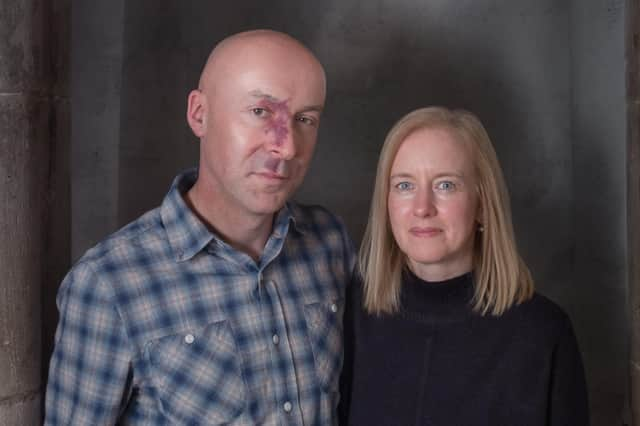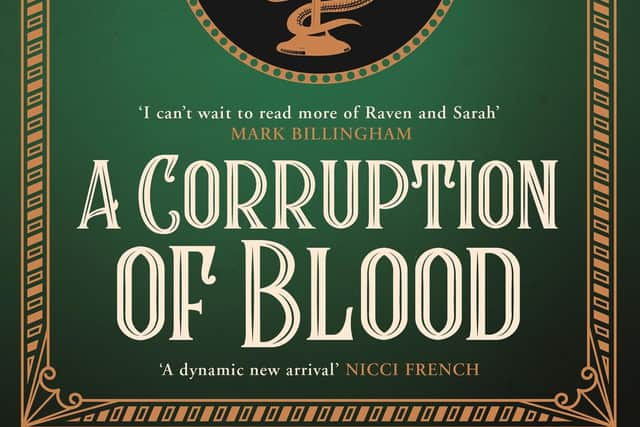Kill your heroes: Author Marisa Haetzman on finding the real James Young Simpson


Throughout the pandemic, the phrase “medical hero” has been liberally used by politicians, journalists and the general public in describing healthcare professionals. It is warmly and respectfully intended as both a compliment and a gesture of gratitude, but in truth it is a hugely problematic term, and not one particularly welcomed by the very people to whom it has been applied. It fosters ideas of preternatural power and invincibility, obscuring the fact that these are human beings with finite reserves of resilience in a situation that is unprecedented in modern times.
The same is true when the word is applied to the medical pioneers of the past: if you define them as heroes based on their notable achievements you miss all of the messy humanity that made them who they really were.
Advertisement
Hide AdWhen undertaking the research for my History of Medicine degree, I was drawn to the work of James Young Simpson, his discovery of the anaesthetic effects of chloroform in 1847, and his efforts to have it accepted into medical practice, particularly obstetrics. However, it was the messy stuff, the relatable stuff that truly inspired me. Simpson was not defined purely by his achievements, but by the life he lived and the family he raised, by his failures as well as his successes, and by his professional rivalries and bitter disputes. These were the things that drove me to co-write a novel (or three) in which he and his contemporaries stalk the pages in all their glorious imperfection.


Chloroform is the discovery that Simpson is rightly known for, but the details surrounding this scientific breakthrough give some insight into the kind of man he was: driven and passionate but also rash and impulsive. In an attempt to find an anaesthetic agent superior to ether (which had been discovered the previous year) Simpson and his assistants, George Keith and James Matthews Duncan, spent many an evening around the dining room table at 52 Queen Street sniffing anything they could get their hands on, frequently making themselves quite ill in the process.
Simpson’s next-door neighbour, James Miller, professor of surgery, often stopped by of a morning on his way to the Infirmary to make sure they had survived the night. Heroic or foolish? I’ll let you decide.
On 4 November 1847, after a disappointing evening of further futile inhalational experiments, they decided to try the contents of a bottle which had previously been thought unsuitable. They poured a large measure into their glass tumblers and inhaled deeply, finding themselves “under the mahogany in a thrice.” Having realised that they had found what they were looking for, their response to having discovered this revolutionary new agent was essentially to get high on it. Simpson invited everyone in the house to try some, and they continued with their “investigations” until their supply was entirely used up.
The line between scientific experimentation and recreational use was frequently blurred, Simpson livening up many a dull dinner party with dangerous intoxicants. Hans Christian Anderson attended one such party where Simpson’s idea of post-prandial entertainment was
to pass the ether around for everyone to inhale. The celebrated author was unimpressed, thinking it wrong and distasteful to play with it in this way, “almost like tempting God.”
Advertisement
Hide AdThe household at 52 Queen Street was no less remarkable than the man who owned it, and all of Edinburgh passed through its door. As one eminent visitor noted: “His house was like a hotel, crammed with patients and their doctors, distinguished foreigners and cranks of all
kinds.’”
Unlike our perceived notions of the regimented Victorian household, Simpson presided over something rather more colourful and rumbunctious. The children were not confined to the nursery at the top of the house but were given free rein as long as they did not disturb the patients who thronged the downstairs public rooms. There was also a veritable menagerie of pets including, at various times, a dalmatian who accompanied Simpson on professional calls, a small black and tan terrier who liked to terrorise the domestic staff, and a parrot who called itself Dr John Gray and lived in a cage at the dining room window.
Advertisement
Hide AdSimpson was a man of considerable renown, but he had his fair share of detractors. Heroism, with its connotations of saintliness or noble selflessness, often ignores the fact that many medical heroes of the time could also be driven as much by ego and ambition as by altruism. Bitter personal disputes found their way into the medical journals of the time: not simply polite disagreements between gentlemen but genuine enmity leaching from the page. Simpson’s nemesis was James Syme, Professor of Clinical Surgery, and the two enjoyed a tempestuous relationship which is explored in our latest novel, A Corruption of Blood. Syme was one of the most skilful operators of his day, pioneering a number of complex procedures such as removal of tumours of jaw and tongue, some of which the patient actually survived.
They rarely agreed on anything (with the exception that homeopathy was pernicious nonsense and that chloroform was useful stuff when amputating a limb) and on one occasion nearly came to blows outside a patient’s bedroom. Syme resented any trespass onto what he perceived to be surgical territory and was forthright in expressing his opinion. A rather taciturn individual, it was said of Syme that “he never unnecessarily wasted a word, a drop of ink or of blood”. Hero or curmudgeon? I’ll let you decide.
In spite of his combative and uncompromising nature, Syme inspired a huge degree of loyalty in those close to him. He was an early surgical influence on Joseph Lister, who married Syme’s daughter and whose antiseptic surgical techniques vastly improved 19th century surgical morbidity and mortality. Despite their numerous professional disagreements and public disputes, when Simpson was gravely ill with an axillary abscess, it was Syme who was called, and who came to his great rival’s aid.
Simpson and Syme would unquestionably qualify as medical pioneers, and in vigorously pursuing medical and surgical excellence, as well as defending what they thought was right, they could almost certainly be termed medical heroes. But what makes them more intriguing are the elements of their characters that they might not wish to be remembered for.
The hero narrative is seductive because it speaks the language of reassurance: that comforting binary of good and bad, black and white. In practice we are attracted to people – contemporary or historical – not in spite of their flaws but because of them. That is the humanity we risk missing when we let the hero narrative obscure the truth of who someone really is.
*A Corruption of Blood by Ambrose Parry (Marisa Haetzman and Chris Brookmyre) is published by Canongate on 19 July. Marisa Haetzman and Chris Brookmyre are appearing at the Edinburgh International Book Festival on 19 August as part of the Summer Crime Wave event, www.edbookfest.co.uk
A message from the Editor:
Advertisement
Hide AdThank you for reading this article. We're more reliant on your support than ever as the shift in consumer habits brought about by coronavirus impacts our advertisers.
If you haven't already, please consider supporting our trusted, fact-checked journalism by taking out a digital subscription at https://www.scotsman.com/subscriptions